|
Radschool Association Magazine - Vol 29 Page 8 |
|
Privacy Policy | Editorial Policy | Join the Association | List of Members | Contact us | Index | Print this page |
|
|
|
RAAF SABRE FLYS AGAIN, AT TEMORA AVIATION MUSEUM
One of the RAAF’s most significant fighter jets, the
CA-27 Sabre, made its first flight in 16 years recently at
The aircraft was loaned to the Museum by the RAAF under an agreement made in 2005 by the Chief of Air Force in an effort to preserve historical military aircraft. The Sabre jet has been restored to flying condition by the Temora Aviation Museum Engineering team and will become a feature of the Museum’s regular Flying Weekends, which are open to the public, as well as select Australian Defence Force Air shows. Sabre A94-983 is owned by the RAAF Museum, loaned to the Temora Aviation Museum and operated by the Temora Historic Flight Club.
Museum Founder and President David Lowy AM said “This is an historic day and I’m extremely proud the Temora Aviation Museum has been able to partner with the RAAF in returning their Sabre to the skies.” |
|
Beelzebug (n.): Satan in the form of a mosquito, that gets into your bedroom at three in the morning and cannot be cast out.
|
|
Chief of
Air Force Air Marshal Mark Binskin AM said “This first flight of the Sabre
aircraft marks a great day for Air Force by vividly reminding us where we
have come from. It is a fantastic result for all involved and I
David
Gardner OAM (left), Director of the RAAF Museum at Point Cook said, “It
was tremendous to see the Sabre take to the sky again. Temora Aviation
Museum is to be congratulated on the huge professional effort they put
into returning the aircraft to
Temora Aviation Museum’s Chief Engineer, Peter Pring-Shambler (right), says “Our engineering team has done a great job over the past three years and I am very proud of what we have achieved today.”
The pilot for the check flight was Darren Crabb (left). As an ex RAAF QFI, Darren flew F/A-18 Hornets and Macchi jets. He is a current corporate jet pilot and is type rated on 14 jet aircraft types. His flying experience includes the Cessna Dragonfly, Vampire, Meteor and Canberra vintage jet aircraft and he has a total of 5,200 hours of flying time in jet aircraft. After the flight Darren said ”It was fantastic! The aircraft performed flawlessly and it was both a pleasure and a privilege for me to return the Sabre to the Australian skies.”
The Australian public will have its first chance to see the Sabre at the Temora Aviation Museum Flying Weekend on September 5th & 6th, 2009. Click HERE to see footage of the aircraft in flight. |
|
Sarchasm : The gulf between the author of sarcastic wit and the person who doesn't get it.
|
We asked Kev Rosser (right) what is was like working on Sabres, this is what he had to say………..
“Crikey mate! I actually worked on that Temora Sabre when it was refurbed to flying condition by 2AD in 1980 or thereabouts! It was retrieved from Butterworth in an almost flying condition. Rumour has it that the pilot who did a taxi test at the time took it a few feet off the runway!
I was at Amberley and involved in "E" servicings on the Sabres in 1968/69. I was a raw new Radtech A, just out of Radschool, and knew sweet fanny adams about anything!
Sabres were flown up from Willytown and processed by us. The first thing that happened was the aircraft was taken to the paint shop where it was stripped of paint using paint stripper which resembled gorilla snot but was much more powerful! One whiff of the stuff very effectively removed all the hairs out of your snozz and if you got the stuff on your skin, your skin turned white and the stuff burnt like hell! I think how long you left it on dictated whether you had a 1st through to 3rd degree burn.
When the aircraft was returned from the paint shop our job was to remove all of the radio equipment along with mounting racks. The radio equipment was sent up to the "top shop" where it was bay serviced.
The radio equipment was, from memory,
AN/ARC 34, UHF AN/ARN 6 Radio compass AN/APX 6 IFF SIF Coder (APX6 Code extender) AN/APG 56 (I think), gunnery radar
And that was about it!
Why the radio gear wasn’t removed before the aircraft was covered in that dreaded stripper is anyone’s guess, but as it wasn’t, so when we removed the gear that dreaded gorilla snot lay in waiting for us everywhere. There was a thin stripe of it around every panel we removed, so that you were forever dashing (screaming) for a tap!
That paint stripper has been implicated in a number of claims against the RAAF. It was seriously good and therefore dangerous stuff. I ‘borrowed’ a 20 litre drum of it once but before I had used it all it ate the drum!
After the aircraft had been completely dismantled and reassembled by the Framies and Sumpies, we got our chance to get at the aircraft to refit the mounting racks and equipment. Because we were last in the production line we were always getting bitched at for holding up proceedings. At this stage we had frequent battles with the Instrument fitters for possession of the cockpit in order to test the equipment which had been allegedly serviced by the top shop, but which almost always never worked!
I remember to this day watching Paul Thomas (Radio Mechanic) in the cockpit of a Sabre doing the tests on the UHF comms as well as the radio compass.
The sense antenna for the radio compass is embedded in the Perspex of the cockpit canopy, so in order to test the compass the canopy had to be slid shut for the antenna contacts to be made. |
|
Dopeler Effect (n.): The tendency of stupid ideas to seem smarter when they come at you rapidly.
|
|
Paul was a naturally very sweaty person and within a few seconds of being enclosed in the glasshouse of the cockpit he was glistening (only wearing shorts). I watched him turn the UHF on and prepare to call the control tower. He put the mic up to his lips and instantly erupted in a frenzied dance which was quite difficult allowing for the constraints of a fighter cockpit! It turned out that because the microphone was a carbon microphone and therefore had 28 volts on its exposed metalwork, seriously conductive, sweaty Paul copped the lot right in the gob!
He came out of the cockpit covered with blood!
Another thing I remember is the Sabre had rubber fuel tanks in the wing. The tanks and wings were removed as part of the servicing, and they used to stuff the smallest framie they had (Steve Green) into the wing all the way to the wing tip, armed with a grinder and his job was to remove any corrosion. Of course he used to whinge like hell, so they tied a rope to one of his legs so that he could be pulled out for smoko (A Sabre wing is not very thick).
When the aircraft was judged finished, a pilot would turn up and begin the task of assessing it for serviceability. He would climb into the aircraft and start the engine, turn off the engine, climb out and go the office and fill 3 pages of the EE500 with faults. After a week of doing this he would get to the point of doing a nearly flying taxi run and fill the EE500 again. When he finally raised the courage to take to the sky, he would flip the aircraft upside down and fill a paper bag with FOD that was rattling around on the cockpit canopy!
I have a photo of the Sabre taking off from Richmond. It was given to me in appreciation of the work I did on the refurb. I'll try to find it in amongst the mess of my removal cartons!
If you can find the others who were at Amberley during this time you will get a more rounded view of what it was like to work on Sabres! There must be some more old farts somewhere! |
Decafalon (n.): The gruelling event of getting through the day consuming only things that are good for you.
|
|
History
of the Sabre.
As early as 1949 the RAAF began planning a replacement jet fighter for the locally-built prop driven CAC Mustang and the DeHavilland Vampire. Successive aircraft under consideration included the Grumman Panther (right); the proposed CAC large, twin-jet, all-weather CA-23 fighter; and the Hawker P.1081 (below left). As a stop gap measure, Gloster Meteors were obtained in 1951 for service with No 77 Squadron in the Korean War, then, in May of the same year, plans were finalized for CAC to build a locally-redesigned version of the North American F-86F Sabre swept-wing fighter.
Due in part to the technical
investigations initiated by CAC
Manager, L. J. Wackett, the RAAF decided to install the 7,500 lb thrust
Rolls-Royce Avon RA.7 turbojet in place of the 6,100 lb thrust General
Electric J-47 engine. Major modifications included a larger nose-intake,
positioning the Avon further aft than the J-47, and moving the engine
servicing break-point. Other improvements called for increased fuel
capacity, a revised
The prototype CAC CA-26 Sabre Mk 30 first flew on 3 August 1953, with an imported Avon engine, piloted by Flight Lieutenant W. Scott. As A94-101 it went to Aircraft Research and Development Unit (ARDU) in 1955 and in latter years went to Wagga as an instructional airframe. In 1960 it was used for ejection seat trials following three fatal Sabre accidents.
The first production CA-27 Sabre, A94-901, flew on 13 July 1954 and was followed by a further 21 Mk 30s, A94-902/922, with imported Avons, and leading-edge slats. From 1955, the next 20 Sabre Mk 31s, A94-923/942, were powered with the CAC Avon Mk 20, had an extended leading-edge, additional fuel cells, and fitments for drop-tanks, bombs, and rockets. The earlier Mk 30s were then modified to Mk 31 standard.
The final version of the
CAC Sabre was
the Mk 32 of which 69 were built, A94-943/990 and A94-351/371.
A Sabre Trials Flight was established at No 2 (Fighter) Operational Training Unit, RAAF Williamtown, on 1 November 1954 and No 75 Squadron became the first Sabre squadron after it reformed on 4 April 1955. No 3 Squadron received its first Sabres on 1 March 1956 and No 77 Squadron on 19 November 1956. In October 1958, No 3 Squadron deployed to RAAF Butterworth and was followed by No 77 Squadron in February 1959.
As No 78 (Fighter) Wing, both squadrons used their Sabres against the Communist guerrillas until 31 July 1960. No 76 Squadron reformed in January 1960 and joined No 2 (Fighter) Operational Conversion Unit and No 75 Squadron as the Sabre equipped No 81 Wing, RAAF Williamtown. On 1 June 1962, eight Sabres deployed from Butterworth to Ubon, Thailand, to counter communist activity. This detachment became No 79 Squadron until it withdrew and disbanded in August 1968.
The Sabre had a max speed of 1,126 km/h (608 kt); a cruise speed of 885 km/h (478 kt); it had a range of 1,850 km (1,000 nm) and a service ceiling of 52,000 ft (15 850 m).
From 1964-5, the Mirage III began to replace the Sabre and, on 31 July 1971, the RAAF officially retired the Sabre from service. |
|
Cashtration (n.): The act of buying a house which renders the subject financially impotent for an indefinite period of time.
|
|
Fighters ready to confront threat.
Twenty-two years after it was bombed by the Japanese,
Darwin was thought to be under threat again -
IN September 1964, for the only time since 1945, a RAAF
fighter squadron was operationally deployed on Australian soil. This
little known deployment of Air Force formations within continental
Australia was linked to contingency plans to
neutralise Indonesian air strikes against Malaysian targets. It was the
result of Australia's involvement in the Confrontation between Malaysia
and Indonesia after the creation of the Federation of Malaysia on
September 16, 1963. A contingency plan prepared in January 1964, Operation
Handover was prepared to protect Darwin from
The planned first phase of operations under Handover was to secure the Darwin base. It was intended to deploy two squadrons (32 Sabre aircraft) from No. 81 Wing at Williamtown. This force was to be supported by four Neptune maritime patrol aircraft and Hercules, Dakota and Caribou transports. An Iroquois helicopter deployed by No. 9 Squadron at Fairbairn was to supply a search and rescue capability.
Flatulence (n.): An emergency vehicle that picks up someone who has been run over by a steamroller.
Handover would be implemented if
AURI aircraft struck at targets in Malaysia and the Royal Air Force’s
response with Vulcan bomber strikes on Indonesia targets was put into
action. Darwin would be one of the
As a result, the Australian Government decided to deploy 16 armed Sabres and 170 support personnel from No. 76 Squadron and No. 481 (Maintenance) Squadron, commanded by Wing Commander G.R Harvey, to Darwin.
The aircraft arrived during the afternoon of the 8th September and were put on constant, and various levels, of alert. The original requirement was for two Sabres to be on five-minute alert and four at 15-minute readiness. This was reduced to four aircraft on 15 minute alert on September 18 and then to two on September 22. These requirements remained in force until October 17 when the commitment was again reduced to two aircraft on 15-minute daylight alert. Thankfully calmer heads prevailed and the improvement in the international situation led to the reduction in the fighter force to eight aircraft on October 20. An Air Defence Control Centre was activated at the rear of the No. 2 Control and Reporting Unit operations room.
This exercise revealed serious shortcomings in the active and passive defensive measures then in place at Darwin. The Air Force had been placed on alert in isolation. Naval coast watch stations remained inactive and the Army light anti-aircraft battery, a vital element in the point defence of the airfield and other essential facilities, deployed to Darwin but remained non-operational. The inability of the radar operated by No. 2 Control and Reporting Unit to track aircraft flying at low level was well known and although a successful trial of the APS-20 radar fitted to Neptune aircraft had been made during a previous air defence exercise, this rudimentary airborne early warning system was not utilised to compensate for the deficiency of the ground radar surveillance equipment.
|
|
Lymph, (v.): To walk with a lisp.
|
|
RAAF Base Darwin in 1964 was sadly
lacking in passive defence measures. Aircraft at the newly constructed
operational readiness facility made excellent targets for strafing and
rocketing. The only
The eight aircraft that remained in Darwin after the decrease in No. 76 Squadron's strength on October 20 later became the No. 81 Wing Detachment, and ensured a fighter presence in the north. No. 75 Squadron assumed this role when it relocated from Butterworth to Darwin in 1983 and in its subsequent move to Tindal in 1988.
It must be conceded that the probability of actual combat was minuscule, but this still does not detract from the fact that the squadron was deployed for war.
Temora.
“Dit” Eaton has been
in touch with the Temora Museum, he wrote: “With the imminent retirement
of the Caribou aircraft from the RAAF inventory in November, I'm wondering
if Temora has approached the Government for one of these aircraft, along
with some spares, which should be available. Temora and
I am aware that the AWM and RAAF Museum have been allocated an aircraft each, but it appears that these will not be maintained in a flyable condition.
They wrote back: “Thank you for your continued interest in the Museum. We have indicated our interest to the RAAF and will keep fingers crossed to see what happens.”
Be great if they can keep one of the old girls in the air…..
|
|
Arachnoleptic Fit (n.): The frantic dance performed just after you've accidentally walked through a spider web.
|
|
Back Go to page: 1 2 3 4 5 6 7 8 9 10 11 12 13 14 15 16 17 18 19 20 Forward |
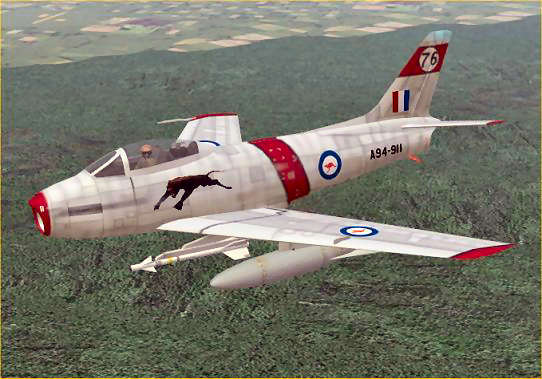 the Temora Aviation Museum in regional NSW, after a period of more than
three years’ restoration and servicing.
the Temora Aviation Museum in regional NSW, after a period of more than
three years’ restoration and servicing.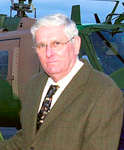 would
like to acknowledge the work of the entire team, including the strong
partnership between Air Force and the Temora Aviation Museum, in achieving
this milestone.”
would
like to acknowledge the work of the entire team, including the strong
partnership between Air Force and the Temora Aviation Museum, in achieving
this milestone.” 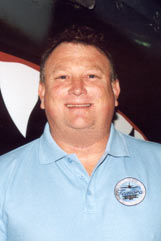 airworthiness status. This event is great for Australian Aviation Heritage
and the RAAF.”
airworthiness status. This event is great for Australian Aviation Heritage
and the RAAF.”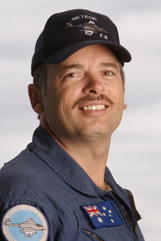


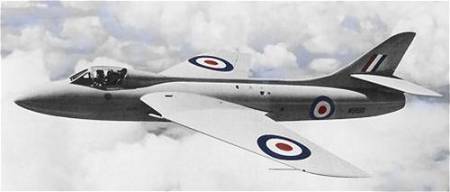 cockpit
layout, and replacement of the six 0.50" machine guns with two 30mm Aden
cannons. Consequently,
cockpit
layout, and replacement of the six 0.50" machine guns with two 30mm Aden
cannons. Consequently,  They carried additional drop-tanks and rockets and, as from 1960,
Sidewinder air-to-air missiles. All earlier Sabres were similarly
modified, and retrospectively fitted with the
They carried additional drop-tanks and rockets and, as from 1960,
Sidewinder air-to-air missiles. All earlier Sabres were similarly
modified, and retrospectively fitted with the
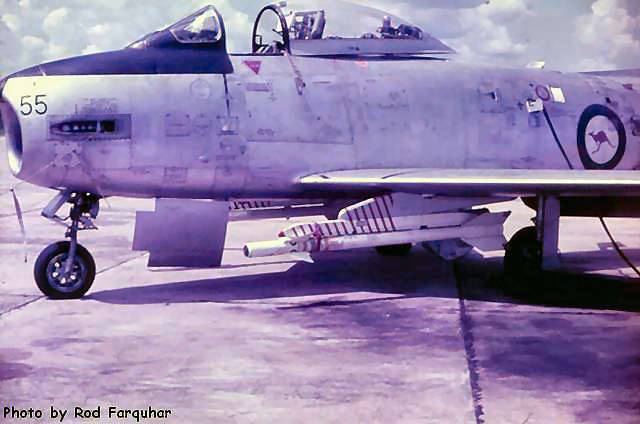 this
time from the Indonesians. This assumed threat led to Operation Handover,
a largely unknown footnote to the Indonesian Confrontation between 1962
and 1966.
this
time from the Indonesians. This assumed threat led to Operation Handover,
a largely unknown footnote to the Indonesian Confrontation between 1962
and 1966. possible
air attack by Russian-built Ilyushin IL 28 medium bombers (left) operated
by the Indonesian Air Force (AURI) from bases at Koepang, West Timor, and
Eastern Java. In parallel, it was planned to use No. 82 Wing Canberra
bombers to conduct strike/reconnaissance operations from Darwin.
possible
air attack by Russian-built Ilyushin IL 28 medium bombers (left) operated
by the Indonesian Air Force (AURI) from bases at Koepang, West Timor, and
Eastern Java. In parallel, it was planned to use No. 82 Wing Canberra
bombers to conduct strike/reconnaissance operations from Darwin. 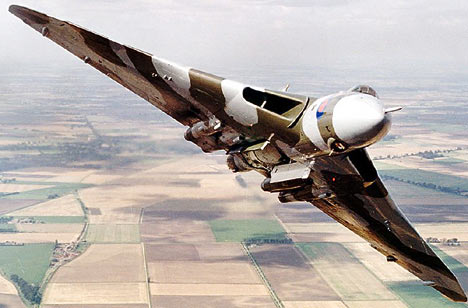 bases from which Vulcan bombers would operate. The landing of Indonesian
paratroops in northern Johore on the 2nd September 1964, was
interpreted as an escalation of the Indonesian threat.
bases from which Vulcan bombers would operate. The landing of Indonesian
paratroops in northern Johore on the 2nd September 1964, was
interpreted as an escalation of the Indonesian threat.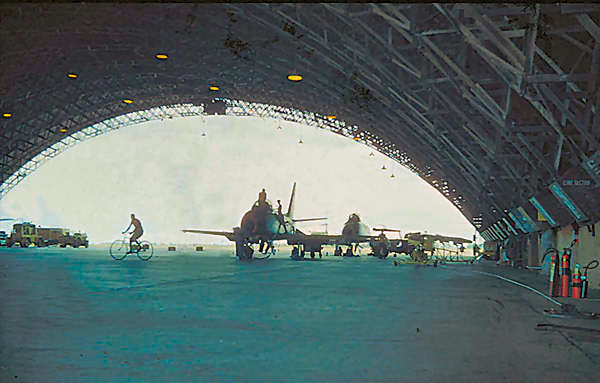 dispersal areas available were constructed during World War II and could,
with a little effort, be converted into blast-proof pens. However, the
bays and taxiways were unsealed and unsuitable for the operation of
aircraft; in the wet season they would be completely inaccessible.
Personnel, too, were poorly protected. There were no slit trenches or
overhead shelters and the support areas were located in central, and
conspicuous, buildings such as Hangar 172 that still showed damage from
the Japanese raids of 1942.
dispersal areas available were constructed during World War II and could,
with a little effort, be converted into blast-proof pens. However, the
bays and taxiways were unsealed and unsuitable for the operation of
aircraft; in the wet season they would be completely inaccessible.
Personnel, too, were poorly protected. There were no slit trenches or
overhead shelters and the support areas were located in central, and
conspicuous, buildings such as Hangar 172 that still showed damage from
the Japanese raids of 1942.  HARS
are two organisations that are more than capable of maintaining a Caribou
in flying condition, especially one that is still flying at present.
HARS
are two organisations that are more than capable of maintaining a Caribou
in flying condition, especially one that is still flying at present.